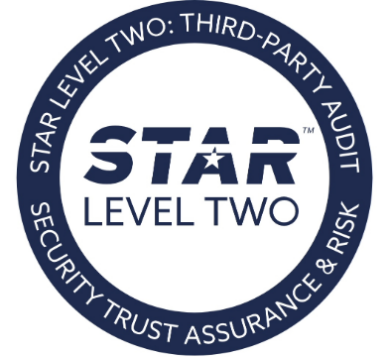Although COVID-19 has had a major impact on the office technology industry, in the long run, poor security is more likely to damage your MPS business than COVID-19. The low print volumes and accelerated digital transformation trends caused by the pandemic aren’t necessarily good for MPS providers, but eventually we can expect workers to go back into the office, page volumes to return to healthy levels, and MPS providers to carry on.
Compare that to a security breach. Not only does that create a significant financial impact, but there is also an impact on your reputation. Finding new customers and holding on to the ones you’ve worked hard to get is difficult enough — try doing it as “that MPS provider who got hacked.” If you sell MPS, then security needs to be a top priority.
Infrastructure
Cloud providers should be performing routine penetration testing and vulnerability assessments and have continuous security monitoring procedures in place. A comprehensive cybersecurity approach involves compliance to broadly recognized security standards, like ISO/IEC 27001 and AICPA SOC 2 Trusted Services Criteria. The combination of standards compliance with adequate tools and procedures can ensure that an Information Security Management System (ISMS) is developed and maintained using a methodology that assesses and mitigates cybersecurity risks and undergoes a continuous improvement process to prevent, or at least mitigate, attacks.
Data security and compliance
MPS providers are responsible for handling a lot of sensitive business information, personally identifiable information (PII), technical information regarding their customers’ IT infrastructure, and other valuable data. When processing data protected by regulations, it is incumbent upon the MPS provider to ensure it stays compliant. Laws governing compliance are increasingly common in the U.S. as well as Europe, and navigating the privacy landscape can be tricky, so it’s essential to work with a provider that stays up to date on compliance. Learn more about various privacy laws and regulations here.
Device security
The scale of the risk this poses, can be seen in Quocirca’s recent Cloud Print Services 2021 report. It found that only 21% of those organisations surveyed are completely confident in the security of their print environment since the onset of the pandemic, compared to 33% pre-pandemic. Additionally, 32% indicated that employee-owned printers present a risk to their organisation, which must do more to protect cloud data from phishing attacks, malware, ransomware and a host of other vulnerabilities.
User security
The best security option is to integrate an MPS provider’s cloud applications into Active Directory (AD) and enable SaaS Single Sign-On, ensuring users don’t need different (possibly weak) credentials for each system and allowing users to be granted the minimum privileges needed.
When AD integration is not possible, simple fixes, like enforcing strong passwords, requiring users to change their password every six months (or sooner), and implementing Two-Factor Authentication (2FA) can prevent cybercriminals from taking control of an employee’s accounts.
Cloud print in the work-from-home environment
Referring specifically to how this impacts print, Quocirca’s 2021 MPS study reported that 39% of organisations have implemented some form of cloud print management platform, rising to 48% in organisations with more than 1,000 employees, 52% in the US and 51% in the financial services sector. To support the needs of remote workers printing to printers located in the office, 47% indicated that they have implemented remote job submission to office devices, rising to 58% in the US and 53% in the financial sector.
Overall, 67% said that they will increase their use of cloud print management by 2025, with a further 5% saying that they will move over to cloud-based printing completely. Notably, those using a hybrid MPS, rather than a fully outsourced MPS, are more likely to transition to cloud-based printing (80% and 63% respectively).
IT security remains the top investment priority over the next 12 months
The recent Quocirca’s Global Print Security Landscape 2022 report reveals that many organisations are struggling to keep up with print security demands in today’s hybrid work environment.
53% of respondents say IT security is one of their highest three priorities. MPS (managed print services) are second in importance (41%) followed by managed IT services (38%) and cloud services (35%). 70% of organisations expect to increase their print security spend over the next 12 months, with only 11% expecting a decrease.
Moving forward
The tools and partners already exist. One such example according to Keypoint Intelligence, is MPS Monitor 2.0. In Keypoint Intelligence’s Managed Print Services Platform Security Whitepaper, it declared that MPS Monitor’s solution had met key criteria, ranging from the ability to maintain customer devices in a stringent security posture through proactive and automated management of key device settings, to offering a proven-secure DCA for their customers’ networks. The Whitepaper also noted that its full and comprehensive set of policies and procedures meets the requirements for industry-standard security certifications.
Clearly, it’s just a matter of doing your homework: choosing the right technologies, ensuring compliance with standards, and keeping yourself committed.
Note:
“This blog is an adjusted version of the one that originally appeared on The Imaging Channel”
To know more



















